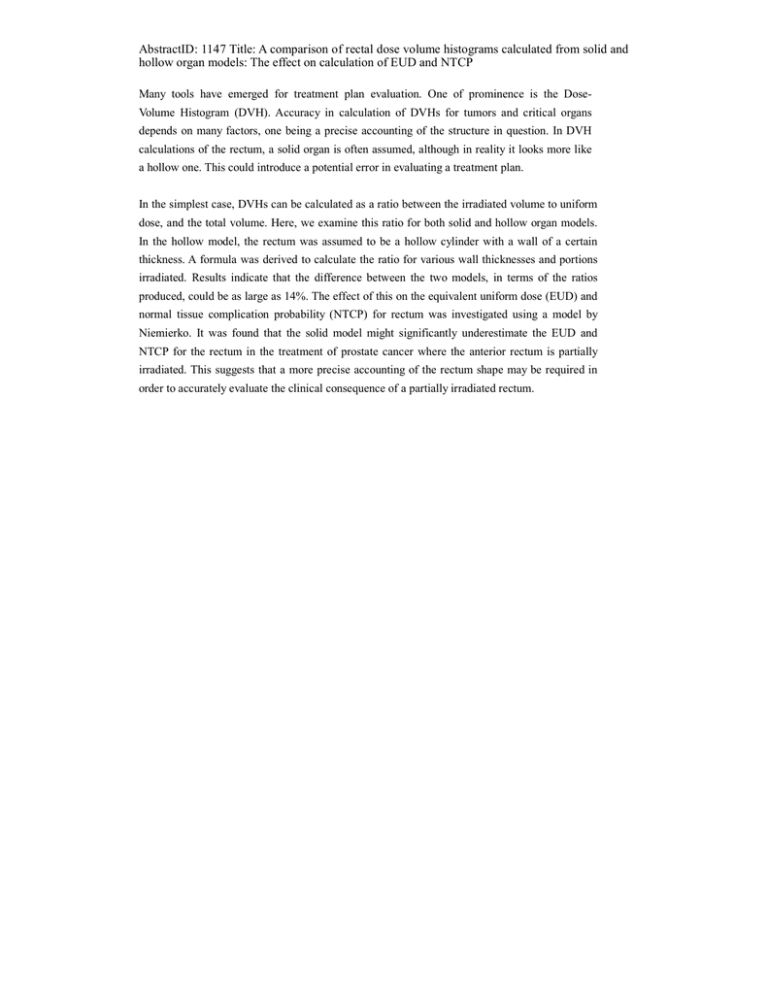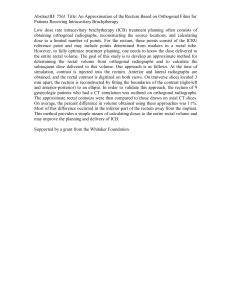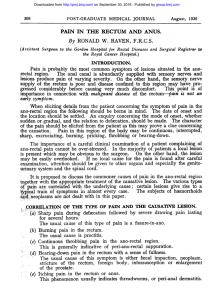AbstractID: 1147 Title: A comparison of rectal dose volume histograms... hollow organ models: The effect on calculation of EUD and...
advertisement

AbstractID: 1147 Title: A comparison of rectal dose volume histograms calculated from solid and hollow organ models: The effect on calculation of EUD and NTCP Many tools have emerged for treatment plan evaluation. One of prominence is the DoseVolume Histogram (DVH). Accuracy in calculation of DVHs for tumors and critical organs depends on many factors, one being a precise accounting of the structure in question. In DVH calculations of the rectum, a solid organ is often assumed, although in reality it looks more like a hollow one. This could introduce a potential error in evaluating a treatment plan. In the simplest case, DVHs can be calculated as a ratio between the irradiated volume to uniform dose, and the total volume. Here, we examine this ratio for both solid and hollow organ models. In the hollow model, the rectum was assumed to be a hollow cylinder with a wall of a certain thickness. A formula was derived to calculate the ratio for various wall thicknesses and portions irradiated. Results indicate that the difference between the two models, in terms of the ratios produced, could be as large as 14%. The effect of this on the equivalent uniform dose (EUD) and normal tissue complication probability (NTCP) for rectum was investigated using a model by Niemierko. It was found that the solid model might significantly underestimate the EUD and NTCP for the rectum in the treatment of prostate cancer where the anterior rectum is partially irradiated. This suggests that a more precise accounting of the rectum shape may be required in order to accurately evaluate the clinical consequence of a partially irradiated rectum.

